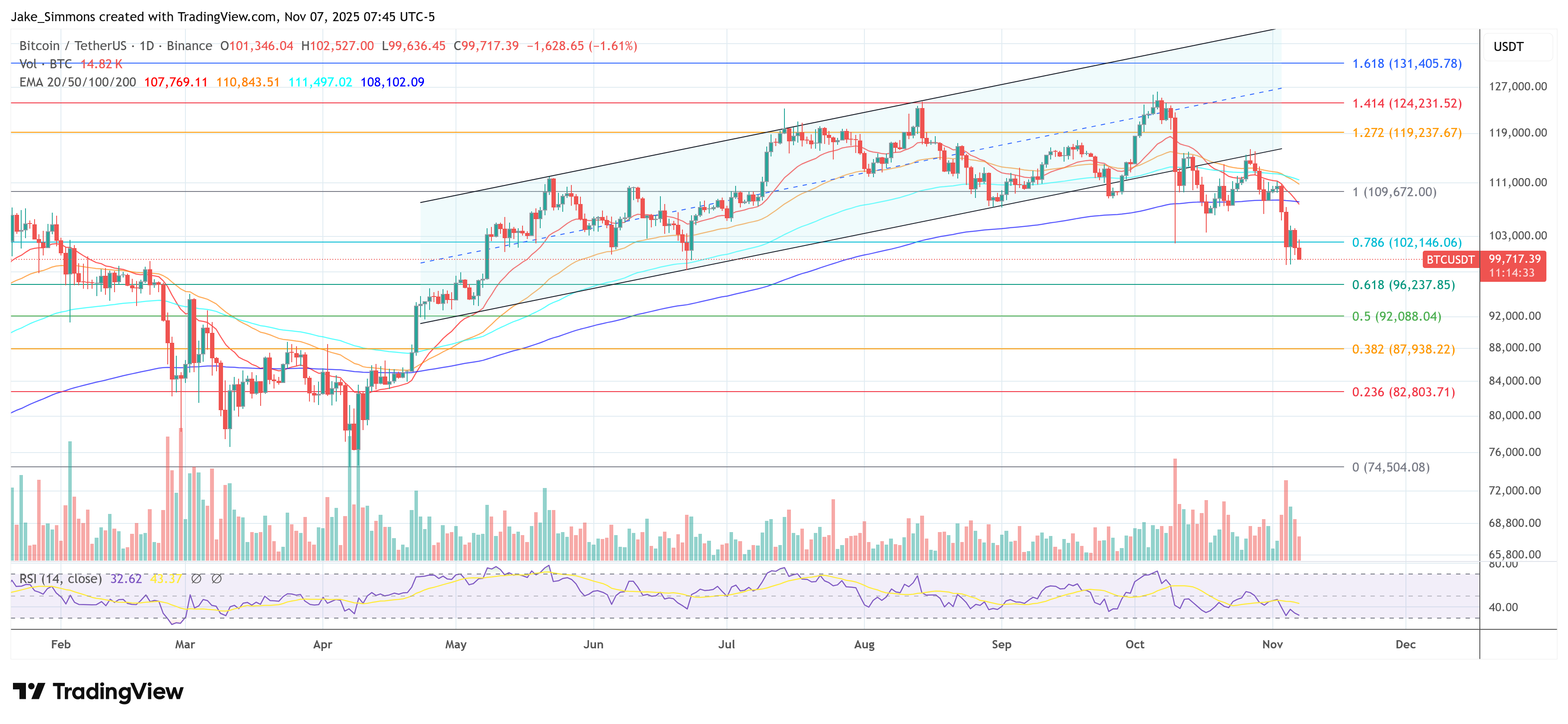Ray Dalio has fired a shot across the macro bow, arguing that the Federal Reserve’s latest stability-sheet guidance risks “stimulating real into a bubble” somewhat than stabilizing a weakening economy—an inversion of the classic put up-disaster QE playbook with potentially seismic implications for exhausting assets, including Bitcoin.
In a put up titled “Stimulating Into a Bubble,” Dalio frames the Fed’s pivot—ending quantitative tightening and signaling that reserves will must originate rising but again—because the next milestone in the late stage of the Spacious Debt Cycle. “Did you see that the Fed’s announcement that this could simply discontinuance QT and originate up QE?” he wrote, cautioning that, although described as a technical maneuver, it’s miles “an easing shuffle… to be conscious the event of the Spacious Debt Cycle.”
If stability-sheet growth coincides with price cuts and power fiscal deficits, Dalio warns, markets may per chance be watching a “classic monetary and financial interaction of the Fed and the Treasury to monetize executive debt.” He adds that, in this kind of setup—excessive equity prices, tight credit score spreads, low unemployment, above-aim inflation, and an AI-led mania—“this could simply sight to me esteem the Fed is stimulating real into a bubble.”
The coverage context for Dalio’s warning is now not imaginary. After months of tightening liquidity and ebbing financial institution reserves, the Fed has presented this could simply live stability-sheet runoff (QT). Chair Jerome Powell underscored that, all thru the plentiful-reserves framework, the central financial institution will in the future must add reserves but again: “At a obvious point, you’ll want reserves to originate regularly rising to like up with the scale of the banking machine and the scale of the economy. So we’ll be including reserves at a obvious point,” he talked about at his October 29 press conference.
Officials and quite a lot of promote-aspect desks personal emphasised that reserve administration needn’t equal a return to disaster-technology QE. The wise similarity: if the Fed is but again an everyday net buyer of Treasuries to like “plentiful” reserves as deficits persist, the market trip can rhyme with QE even without the sign.
While Dalio spars Bitcoin from his put up, the mechanics are familiar to Bitcoin merchants. He argues that once central banks aquire bonds and push real yields down, “what occurs subsequent is relying on where the liquidity goes.” If it stays in financial assets, “multiples kind bigger, threat spreads compress, and gold rises,” producing “financial asset inflation.”
If it seeps into goods and services, inflation rises and real returns can erode. Crucially for sinful-asset allocation, Dalio frames relative returns explicitly: with gold yielding 0% and, affirm, a 10-365 days Treasury yielding ~4%, gold outperforms if its sign appreciation is expected to exceed that price, especially as inflation expectations rise and the forex’s purchasing strength falls. In that environment, “the extra money and credit score central banks are making, the increased I quiz the inflation price to be, and the less I esteem bonds relative to gold.”
What This Ability For Bitcoin
Commentators straight translated these mechanics for Bitcoin. “Fed resumes QE → more liquidity → real passion charges drop,” wrote Coin Bureau CEO Reduce Puckrin. “Falling real charges → bonds & money become unattractive → money chases threat and exhausting assets… Inflation threat rises → merchants hedge with gold, commodities, and digital stores of sign.” He highlighted Dalio’s absorb language—“gold rises so there may be financial asset inflation,” and QE “pushes real yields down and pushes P/E multiples up”—before concluding: “Bitcoin flourishes in precisely that environment… it’s digital gold on steroids.”
Millionaire investor Thomas Kralow sharpened the timing threat embedded in Dalio’s framework: this could now not be “stimulus real into a despair” but “stimulus real into a mania.” In his words, liquidity would “flood already overheated markets… shares soften up, gold rips, and crypto… goes vertical,” with the current threat-on sequence across the crypto complex. His caveat mirrors Dalio’s late-cycle warning: a liquidity soften-up now, then—on a protracted horizon—re-acceleration in inflation, a compelled coverage reversal, and a violent bubble pop.
For Bitcoin, the come-term transmission is easy. Decrease real yields and expanding liquidity historically coincide with stronger performance of prolonged-duration, excessive-beta, and shortage narratives; akin to 1999-type soften-united statesand late-cycle surges in exhausting assets, including gold—and, by extension, BTC as a “digital gold” proxy.
However the medium-to-prolonged-term rigidity is unresolved: if the same easing stokes renewed inflation stress, the exit—the point at which coverage must tighten into the bubble—becomes the regime atomize Dalio is flagging.
Dalio’s bottom line is now not a purchasing and selling signal but a regime warning. “Whether or now not this becomes a corpulent and classic stimulative QE (with tall net purchases) stays to be seen,” he writes. If the Fed is indeed easing real into a bubble, Bitcoin may per chance well profit on the formulation up—but that course, by Dalio’s absorb schema, ends with impact.
At press time, Bitcoin traded at $99,717.


